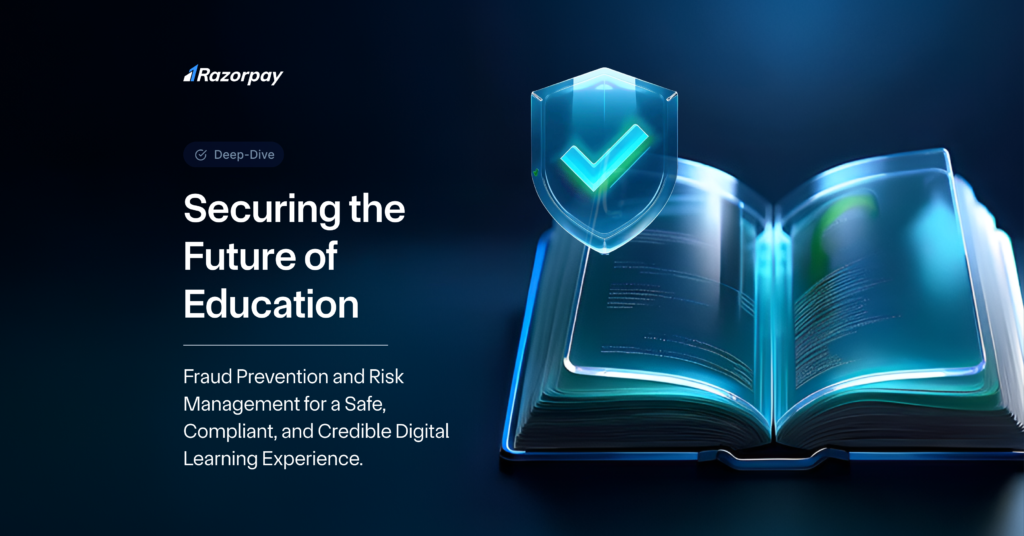The e-learning industry has transformed how the world learns. As the surge of new users continues to flock to e-learning platforms, this growing popularity has also drawn the attention of cybercriminals looking to exploit the space.
Fraud and scams don’t just hurt your bottom line—they break the trust of your users. Hence it’s important to empower e-learning platforms with the tools and knowledge they need to stay secure.
At Razorpay, we’re dedicated to helping learning platforms ensure a safe learning environment. Here are ten strategies designed to help protect your platform and ensure a secure and seamless learning experience for all.
1. Keep Fraud at Bay with Identity Checks and Secure Access
- Verify the identities of both students and educators using strict KYC (Know Your Customer) protocols to avoid fraudulent sign-ups.
- Encourage users to set strong passwords and enable two-factor authentication (2FA) for secure account access.
2. Stay One Step Ahead with Monitoring and Alerts
- Use transaction monitoring systems to identify unusual patterns like excessive refunds or chargebacks.
- Alert users of suspicious account activity, such as logins from unknown devices, to prevent unauthorised access.
3. Ensure Content Quality and Platform Credibility
- Thoroughly screen educators and course providers to ensure legitimacy and high-quality learning experiences.
- Regularly audit course content to prevent misinformation or the sharing of illegal materials.
- Be transparent by sharing complete details about courses, including duration, certifications, and outcomes.
4. Ensure Compliance with Educational Standards
- Ensure all courses meet local or international educational standards and certifications.
- Verify the legitimacy of certifications issued through your platform to uphold credibility.
- Onboard only reputable institutions, schools, or colleges to maintain quality.
5. Make Learning Accessible for Everyone
- Deliver content in multiple formats like video, audio, and PDFs to cater to different learning styles.
- Maintain a subscriber database to ensure students can access their purchased materials anytime, anywhere.
- Avoid interruptions in content delivery to keep the learning process smooth.
6. Protect Your Content from Plagiarism
- Regularly monitor for unauthorized copying or redistribution of your educational materials.
- Ensure instructors and users avoid uploading plagiarized or copyrighted content.
7. Track Engagement with Attendance and Notifications
- Capture attendance for live sessions to monitor participation and engagement.
- Send automated reminders to students who miss sessions and provide access to recordings to ensure inclusivity.
8. Be Transparent About Outcomes and Opportunities
- Avoid false claims about job opportunities after course completion. Build trust with honest and transparent communication about career support services.
- Clearly define course objectives, scope, and limitations to manage expectations.
9. Handle Fee Reversals the Right Way
- Have clear protocols in place to revoke fees received through unauthorized transactions after verification.
10. Simplify Refunds and Cancellations
- Clearly outline refund and cancellation policies to avoid disputes.
- Use automated systems to process genuine refund requests quickly and efficiently.
To Sum Up…
Balancing innovation with strong risk management is the key to creating secure and successful e-learning platforms. By taking proactive steps to mitigate risks, you can build trust, stay compliant, and ensure an uninterrupted learning journey for your users.



